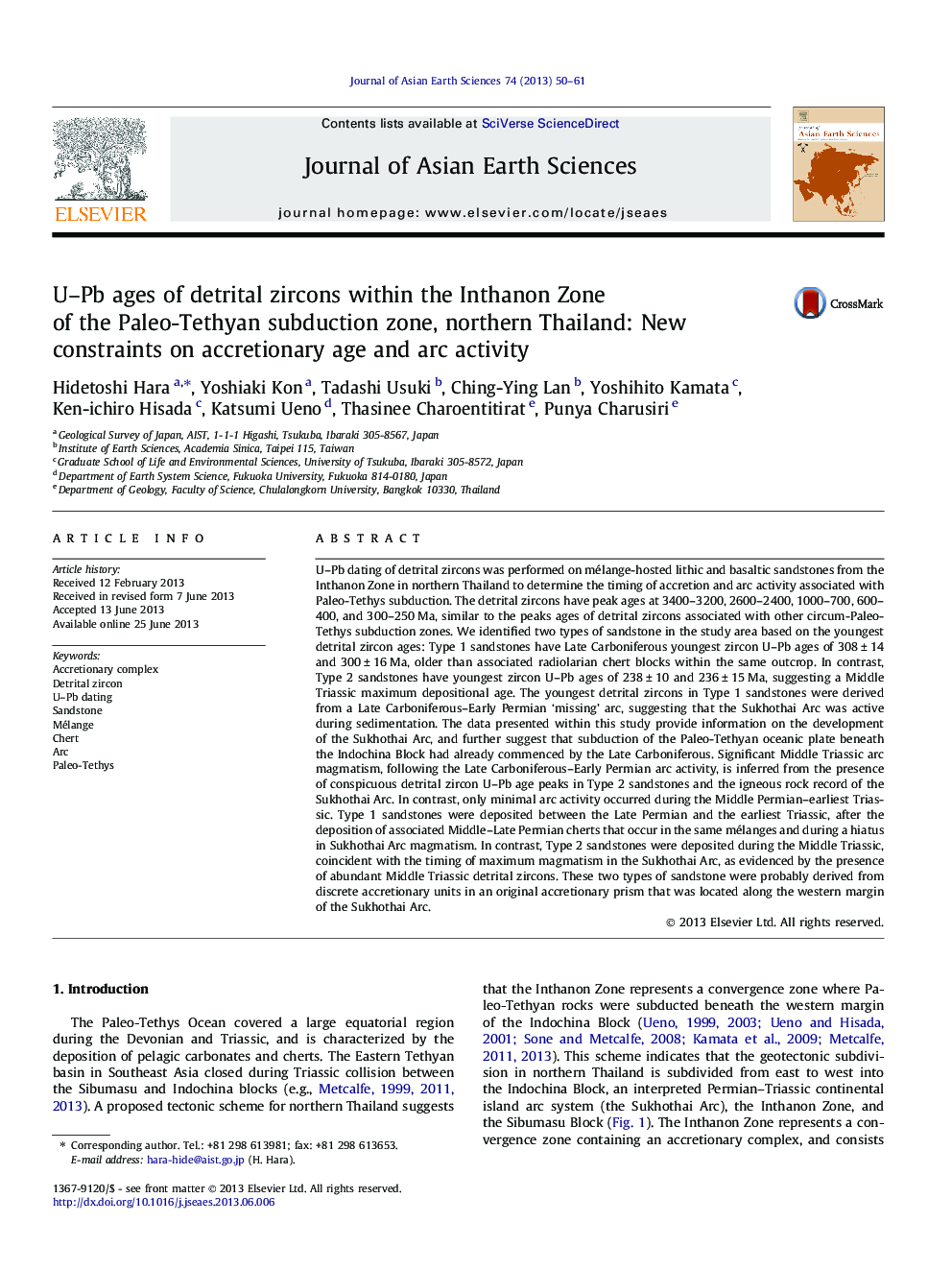| کد مقاله | کد نشریه | سال انتشار | مقاله انگلیسی | نسخه تمام متن |
|---|---|---|---|---|
| 4731051 | 1640393 | 2013 | 12 صفحه PDF | دانلود رایگان |

• Detrital zircon U–Pb ages from mélange-hosted lithic sandstones are presented.
• We provide new insights on Paleo-Tethys subduction accretionary ages and arc activity.
• Evidence for Late Carboniferous–Early Permian Sukhothai Arc activity is demonstrated.
• Maximum Sukhothai Arc activity occurred in the Middle Triassic.
U–Pb dating of detrital zircons was performed on mélange-hosted lithic and basaltic sandstones from the Inthanon Zone in northern Thailand to determine the timing of accretion and arc activity associated with Paleo-Tethys subduction. The detrital zircons have peak ages at 3400–3200, 2600–2400, 1000–700, 600–400, and 300–250 Ma, similar to the peaks ages of detrital zircons associated with other circum-Paleo-Tethys subduction zones. We identified two types of sandstone in the study area based on the youngest detrital zircon ages: Type 1 sandstones have Late Carboniferous youngest zircon U–Pb ages of 308 ± 14 and 300 ± 16 Ma, older than associated radiolarian chert blocks within the same outcrop. In contrast, Type 2 sandstones have youngest zircon U–Pb ages of 238 ± 10 and 236 ± 15 Ma, suggesting a Middle Triassic maximum depositional age. The youngest detrital zircons in Type 1 sandstones were derived from a Late Carboniferous–Early Permian ‘missing’ arc, suggesting that the Sukhothai Arc was active during sedimentation. The data presented within this study provide information on the development of the Sukhothai Arc, and further suggest that subduction of the Paleo-Tethyan oceanic plate beneath the Indochina Block had already commenced by the Late Carboniferous. Significant Middle Triassic arc magmatism, following the Late Carboniferous–Early Permian arc activity, is inferred from the presence of conspicuous detrital zircon U–Pb age peaks in Type 2 sandstones and the igneous rock record of the Sukhothai Arc. In contrast, only minimal arc activity occurred during the Middle Permian–earliest Triassic. Type 1 sandstones were deposited between the Late Permian and the earliest Triassic, after the deposition of associated Middle–Late Permian cherts that occur in the same mélanges and during a hiatus in Sukhothai Arc magmatism. In contrast, Type 2 sandstones were deposited during the Middle Triassic, coincident with the timing of maximum magmatism in the Sukhothai Arc, as evidenced by the presence of abundant Middle Triassic detrital zircons. These two types of sandstone were probably derived from discrete accretionary units in an original accretionary prism that was located along the western margin of the Sukhothai Arc.
Journal: Journal of Asian Earth Sciences - Volume 74, 25 September 2013, Pages 50–61